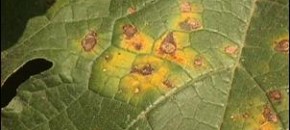I was out late last week scouting some corn fields and checking some black cutworm moth monitoring traps. Fortunately, the number of black cutworm moths in the traps have been rather low. I did notice some very minimal black cutworm damage in one field. This does not mean growers should let their guard down. Pennsylvania […]
Continue reading...Potato Disease Forecasting Report 5-27-14
Potato Disease Forecasting Report 5-27-14 – Click to Download We will be tracking DSVs for Late blight development and calculating P-days for initiating the first early blight fungicide application. The first late blight fungicide application is recommended once 18 DSVs accumulate from green row. Green row typically occurs around the first week in May in southern […]
Continue reading...Tomato Disease Forecasting Report 5-27-14
5-27-14 Tomato Report – Click to Download Disease severity values (DSVs) for early blight, septoria leaf spot, and tomato anthracnose development are determined daily based on leaf wetness (due to rainfall, dew) and air temperature. On a daily basis DSV values can range from 0 to 4 where 0 = no chance for disease development […]
Continue reading...Vegetable Disease Briefs 5-25-14
Hail damage has been reported in areas of southern New Jersey. Cucurbit downy mildew has been reported on cucumber as far north as Southern Georgia. To track cucurbit downy mildew in the US please visit http://cdm.ipmpipe.org/ No late blight has been reported in the region to date and has only been found as far north […]
Continue reading...Vegetable Disease Update 5-25-14
Potato Strawberry Tomato Potato Blackleg is caused by Erwinia spp. which also cause ‘soft rots’. The bacteria which lead to the aerial phase of Blackleg are soil-borne (originate from old crop debris) and spread by rainfall, overhead irrigation and wind.
Continue reading...Recognizing Angular Leaf Spot in Cucurbits

Angular leaf spot is common in New Jersey and the region. It often shows up during cool, wet weather and isolated rain. Angular leaf spot will first appear as, small water-soaked lesions which will expand until they reach a larger leaf vein resulting in the angular looking symptoms on leaves. Under heavy disease pressure, the bacteria will […]
Continue reading...